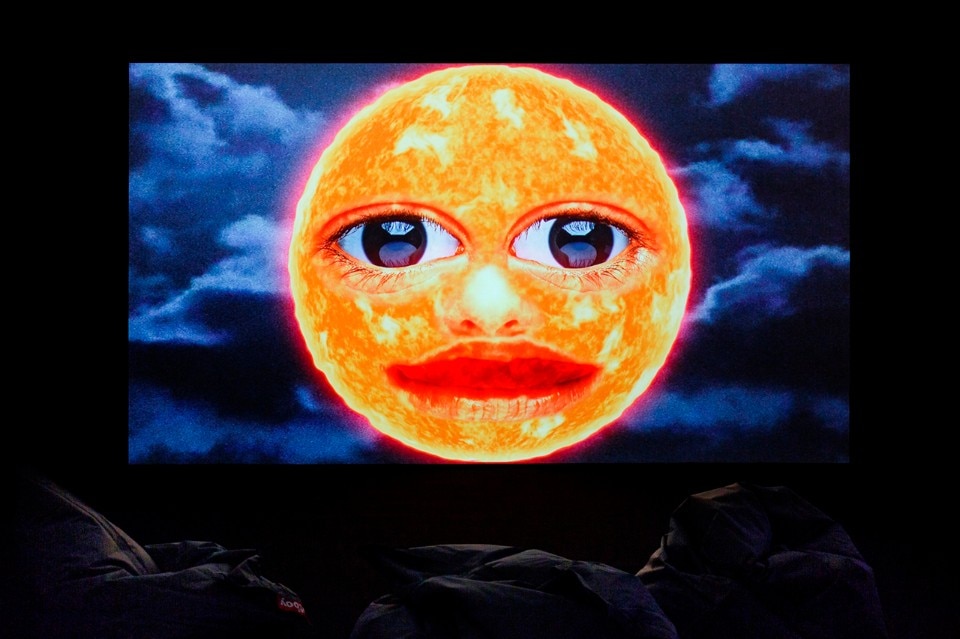The book New Dark Age: Technology and the End of the Future (2018) by the British artist and theoretician James Bridle describes how technological acceleration has transformed our planet, our society and us, but has not succeeded in enhancing our comprehension of the world. The reasons are complex, and the answers complicated. The exhibition “Low Form” by Bartolomeo Pietromarchi is part of this indeterminate and sweeping theoretic and operational sphere.
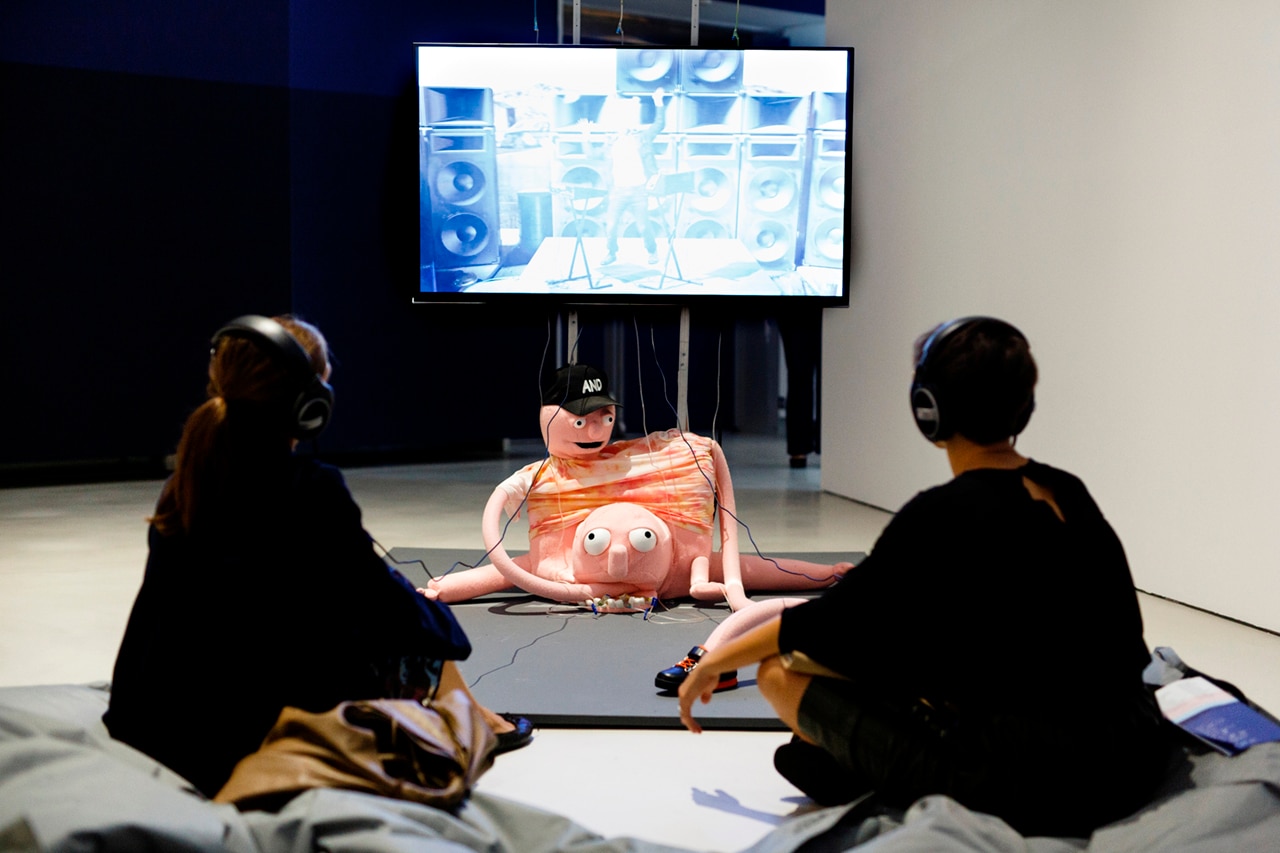
 View gallery
View gallery
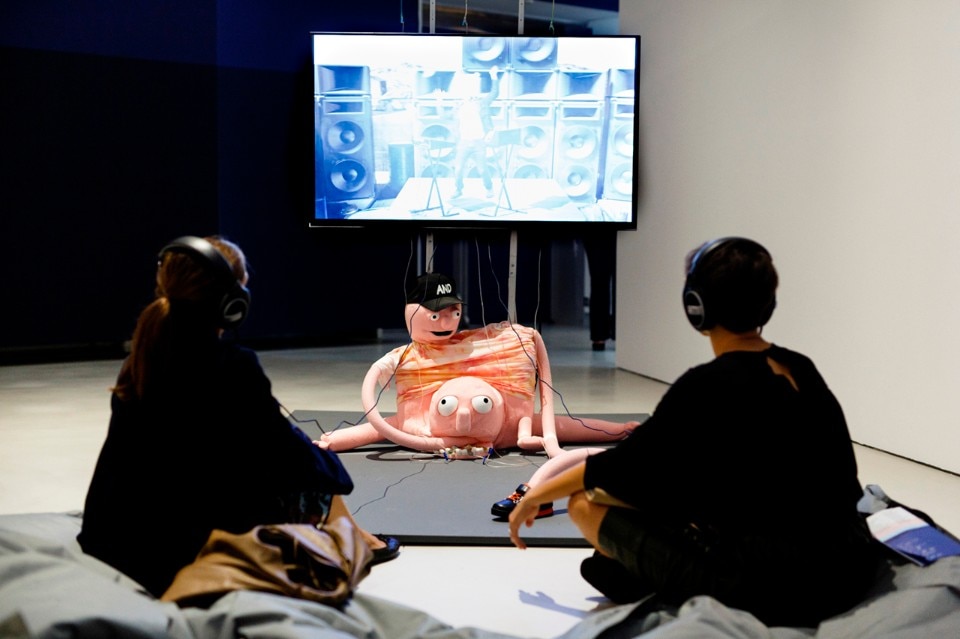
"Low form. Imaginaries and Visions in the Age of Artificial Intelligence ": an exhibition that invites you to relate in an artistic key with the limits of technology in terms of both instrument and content
The exhibition curated by Bartolomeo Pietromarchial MAXXI is composed of 16 works that restore and feed imaginaries and visions through a plurality of linguistic complexes in which political contestation, sexual experimentation and artistic expression overlap, weaving together with the user mobile and open bonds. The user is invited to investigate the artistic implications of contemporary technological drift by activating a process of comparison with themes that touch upon different disciplinary areas such as computational design, the status of the image and philosophy.
“Low form. Imaginaries and Visions in the Age of Artificial Intelligence", curated by Bartolomeo Pietromarchi, exhibition view, MAXXI, Rome, 2018
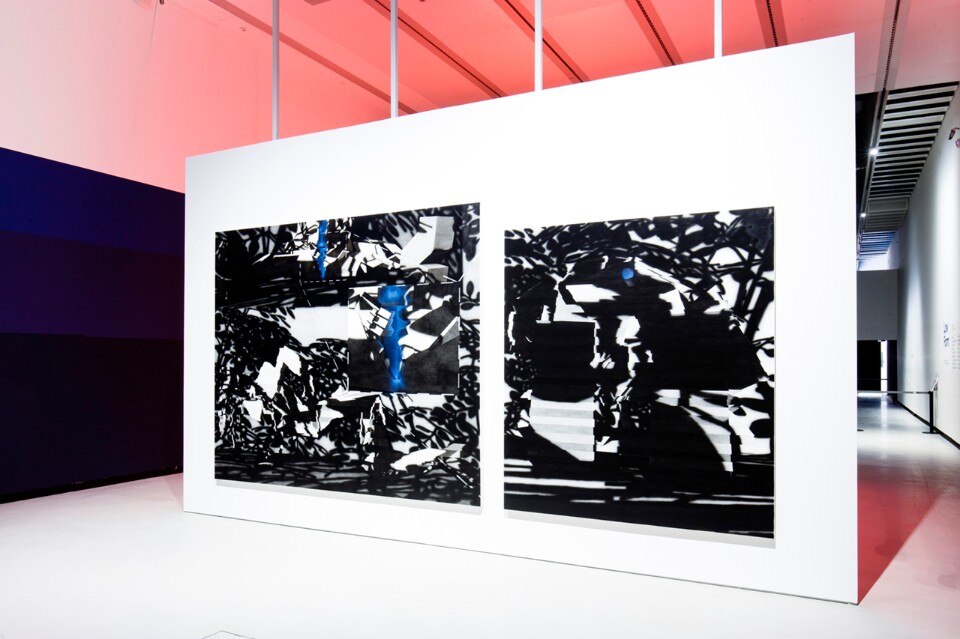
"Low form. Imaginaries and Visions in the Age of Artificial Intelligence ": an exhibition that invites you to relate in an artistic key with the limits of technology in terms of both instrument and content
The exhibition curated by Bartolomeo Pietromarchial MAXXI is composed of 16 works that restore and feed imaginaries and visions through a plurality of linguistic complexes in which political contestation, sexual experimentation and artistic expression overlap, weaving together with the user mobile and open bonds. The user is invited to investigate the artistic implications of contemporary technological drift by activating a process of comparison with themes that touch upon different disciplinary areas such as computational design, the status of the image and philosophy.
“Low form. Imaginaries and Visions in the Age of Artificial Intelligence", curated by Bartolomeo Pietromarchi, exhibition view, MAXXI, Rome, 2018
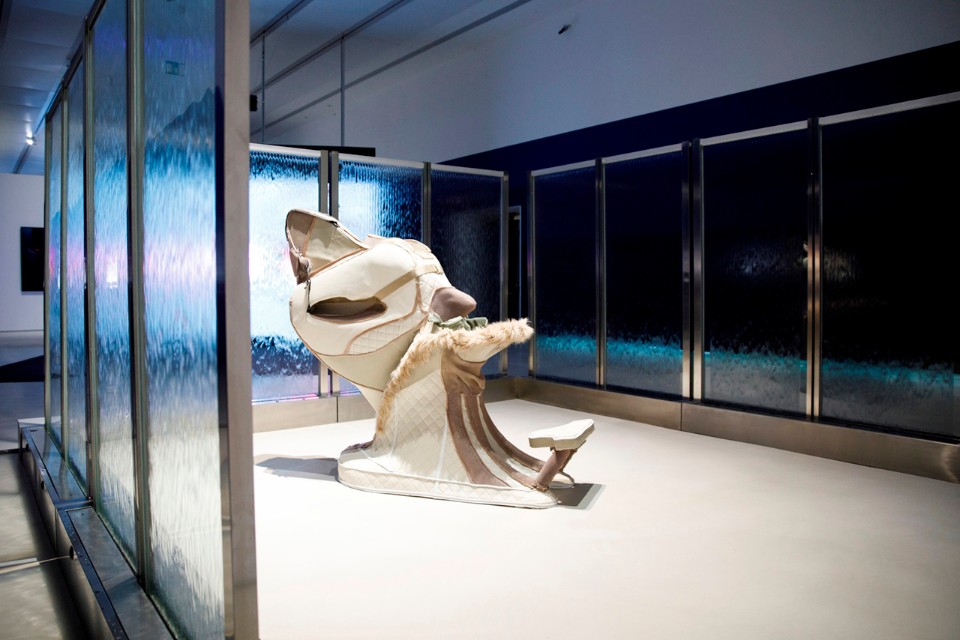
"Low form. Imaginaries and Visions in the Age of Artificial Intelligence ": an exhibition that invites you to relate in an artistic key with the limits of technology in terms of both instrument and content
The exhibition curated by Bartolomeo Pietromarchial MAXXI is composed of 16 works that restore and feed imaginaries and visions through a plurality of linguistic complexes in which political contestation, sexual experimentation and artistic expression overlap, weaving together with the user mobile and open bonds. The user is invited to investigate the artistic implications of contemporary technological drift by activating a process of comparison with themes that touch upon different disciplinary areas such as computational design, the status of the image and philosophy.
“Low form. Imaginaries and Visions in the Age of Artificial Intelligence", curated by Bartolomeo Pietromarchi, exhibition view, MAXXI, Rome, 2018
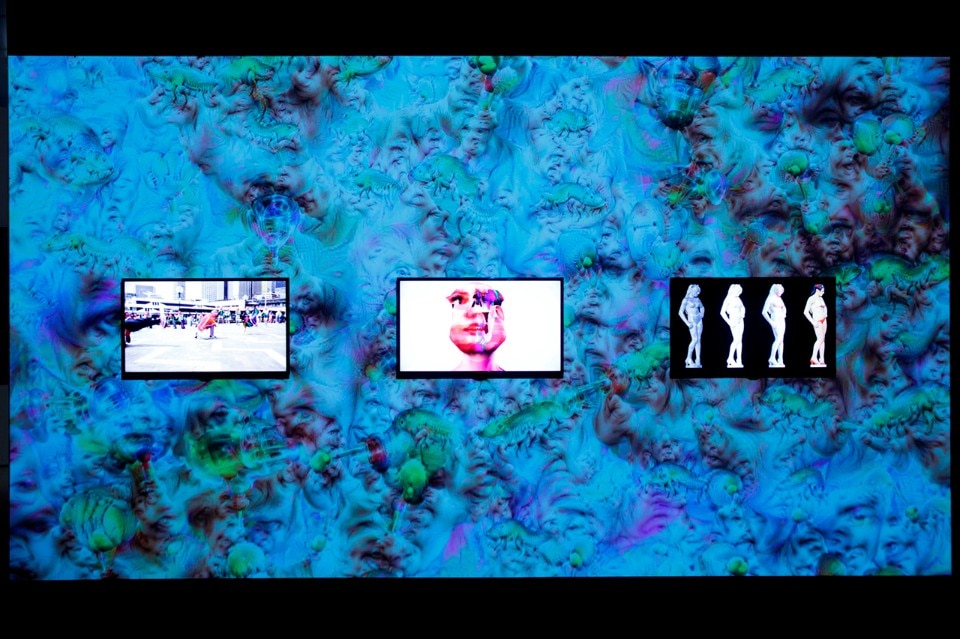
"Low form. Imaginaries and Visions in the Age of Artificial Intelligence ": an exhibition that invites you to relate in an artistic key with the limits of technology in terms of both instrument and content
The exhibition curated by Bartolomeo Pietromarchial MAXXI is composed of 16 works that restore and feed imaginaries and visions through a plurality of linguistic complexes in which political contestation, sexual experimentation and artistic expression overlap, weaving together with the user mobile and open bonds. The user is invited to investigate the artistic implications of contemporary technological drift by activating a process of comparison with themes that touch upon different disciplinary areas such as computational design, the status of the image and philosophy.
“Low form. Imaginaries and Visions in the Age of Artificial Intelligence", curated by Bartolomeo Pietromarchi, exhibition view, MAXXI, Rome, 2018
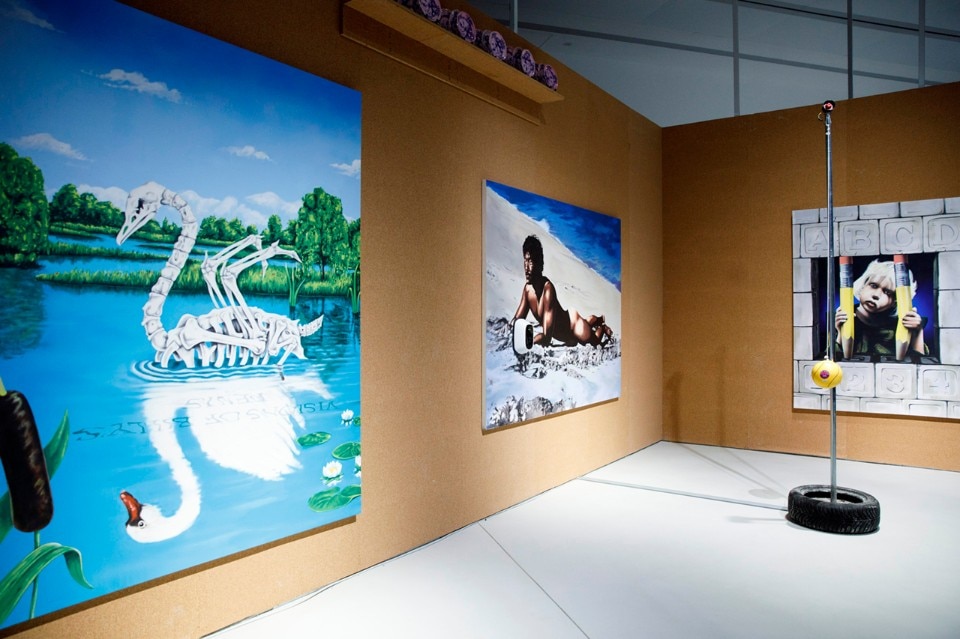
"Low form. Imaginaries and Visions in the Age of Artificial Intelligence ": an exhibition that invites you to relate in an artistic key with the limits of technology in terms of both instrument and content
The exhibition curated by Bartolomeo Pietromarchial MAXXI is composed of 16 works that restore and feed imaginaries and visions through a plurality of linguistic complexes in which political contestation, sexual experimentation and artistic expression overlap, weaving together with the user mobile and open bonds. The user is invited to investigate the artistic implications of contemporary technological drift by activating a process of comparison with themes that touch upon different disciplinary areas such as computational design, the status of the image and philosophy.
“Low form. Imaginaries and Visions in the Age of Artificial Intelligence", curated by Bartolomeo Pietromarchi, exhibition view, MAXXI, Rome, 2018
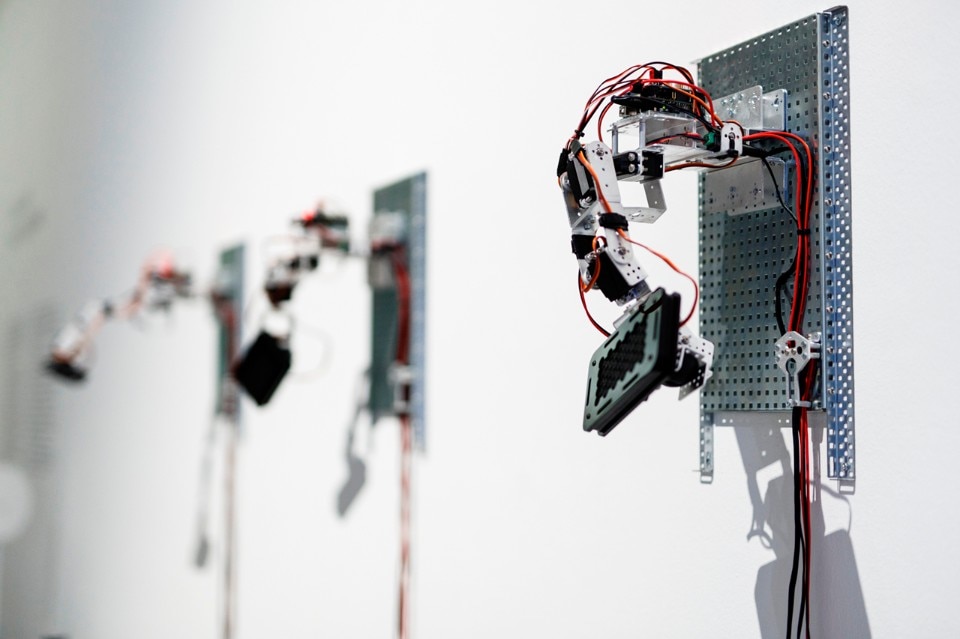
"Low form. Imaginaries and Visions in the Age of Artificial Intelligence ": an exhibition that invites you to relate in an artistic key with the limits of technology in terms of both instrument and content
The exhibition curated by Bartolomeo Pietromarchial MAXXI is composed of 16 works that restore and feed imaginaries and visions through a plurality of linguistic complexes in which political contestation, sexual experimentation and artistic expression overlap, weaving together with the user mobile and open bonds. The user is invited to investigate the artistic implications of contemporary technological drift by activating a process of comparison with themes that touch upon different disciplinary areas such as computational design, the status of the image and philosophy.
“Low form. Imaginaries and Visions in the Age of Artificial Intelligence", curated by Bartolomeo Pietromarchi, exhibition view, MAXXI, Rome, 2018
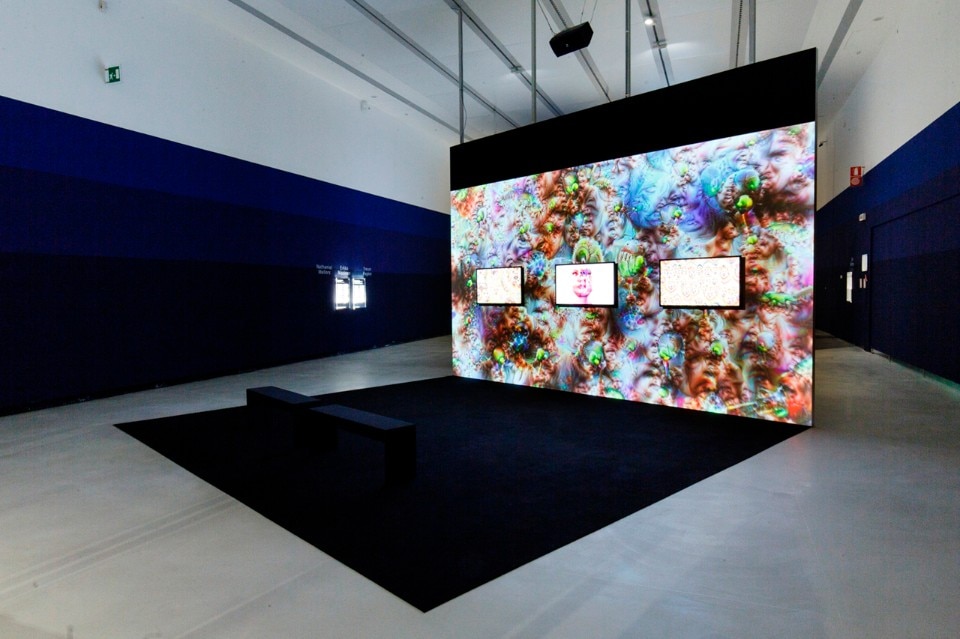
"Low form. Imaginaries and Visions in the Age of Artificial Intelligence ": an exhibition that invites you to relate in an artistic key with the limits of technology in terms of both instrument and content
The exhibition curated by Bartolomeo Pietromarchial MAXXI is composed of 16 works that restore and feed imaginaries and visions through a plurality of linguistic complexes in which political contestation, sexual experimentation and artistic expression overlap, weaving together with the user mobile and open bonds. The user is invited to investigate the artistic implications of contemporary technological drift by activating a process of comparison with themes that touch upon different disciplinary areas such as computational design, the status of the image and philosophy.
“Low form. Imaginaries and Visions in the Age of Artificial Intelligence", curated by Bartolomeo Pietromarchi, exhibition view, MAXXI, Rome, 2018
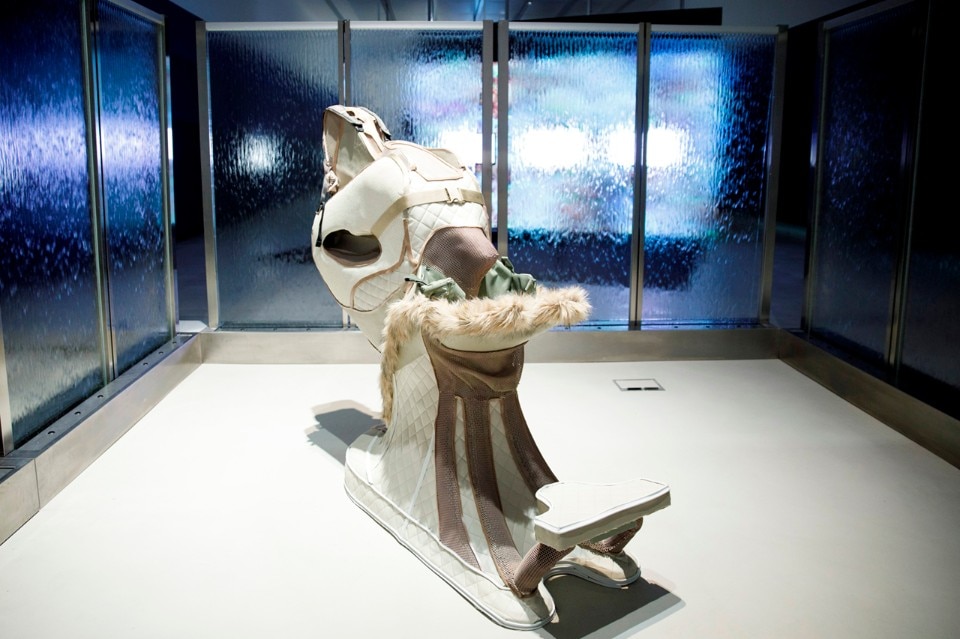
"Low form. Imaginaries and Visions in the Age of Artificial Intelligence ": an exhibition that invites you to relate in an artistic key with the limits of technology in terms of both instrument and content
The exhibition curated by Bartolomeo Pietromarchial MAXXI is composed of 16 works that restore and feed imaginaries and visions through a plurality of linguistic complexes in which political contestation, sexual experimentation and artistic expression overlap, weaving together with the user mobile and open bonds. The user is invited to investigate the artistic implications of contemporary technological drift by activating a process of comparison with themes that touch upon different disciplinary areas such as computational design, the status of the image and philosophy.
“Low form. Imaginaries and Visions in the Age of Artificial Intelligence", curated by Bartolomeo Pietromarchi, exhibition view, MAXXI, Rome, 2018
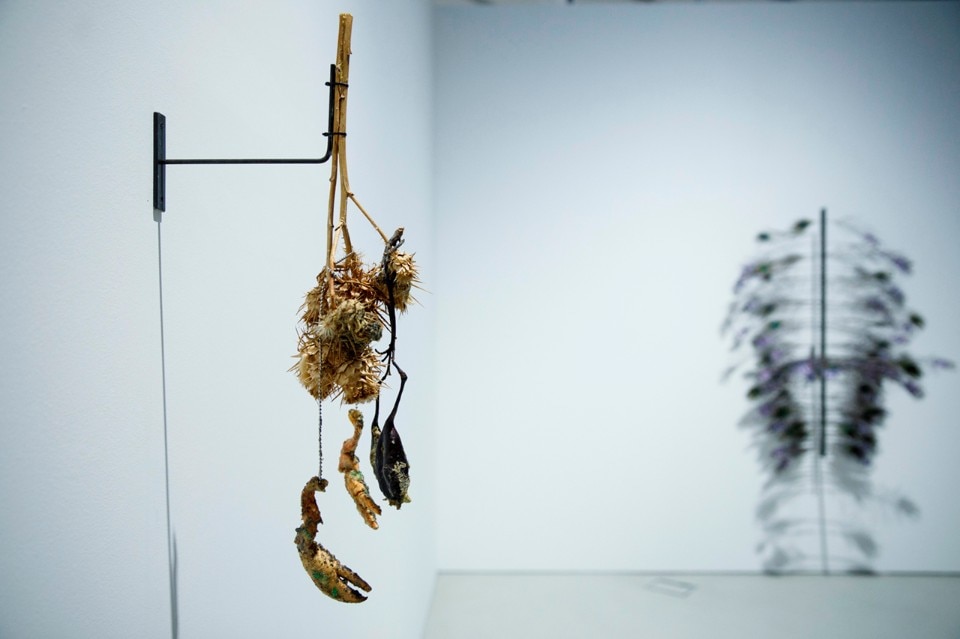
"Low form. Imaginaries and Visions in the Age of Artificial Intelligence ": an exhibition that invites you to relate in an artistic key with the limits of technology in terms of both instrument and content
The exhibition curated by Bartolomeo Pietromarchial MAXXI is composed of 16 works that restore and feed imaginaries and visions through a plurality of linguistic complexes in which political contestation, sexual experimentation and artistic expression overlap, weaving together with the user mobile and open bonds. The user is invited to investigate the artistic implications of contemporary technological drift by activating a process of comparison with themes that touch upon different disciplinary areas such as computational design, the status of the image and philosophy.
“Low form. Imaginaries and Visions in the Age of Artificial Intelligence", curated by Bartolomeo Pietromarchi, exhibition view, MAXXI, Rome, 2018
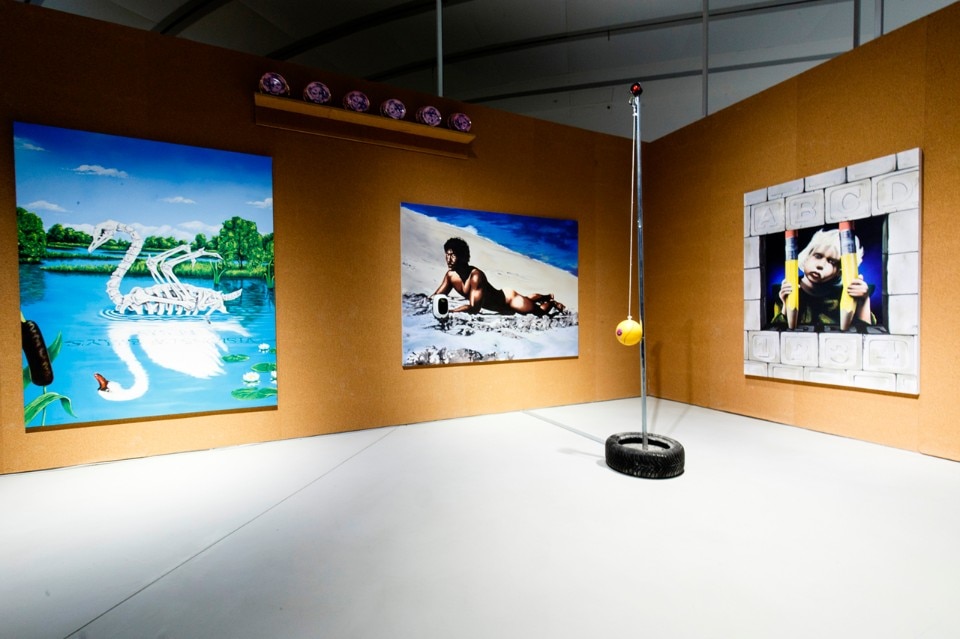
"Low form. Imaginaries and Visions in the Age of Artificial Intelligence ": an exhibition that invites you to relate in an artistic key with the limits of technology in terms of both instrument and content
The exhibition curated by Bartolomeo Pietromarchial MAXXI is composed of 16 works that restore and feed imaginaries and visions through a plurality of linguistic complexes in which political contestation, sexual experimentation and artistic expression overlap, weaving together with the user mobile and open bonds. The user is invited to investigate the artistic implications of contemporary technological drift by activating a process of comparison with themes that touch upon different disciplinary areas such as computational design, the status of the image and philosophy.
“Low form. Imaginaries and Visions in the Age of Artificial Intelligence", curated by Bartolomeo Pietromarchi, exhibition view, MAXXI, Rome, 2018
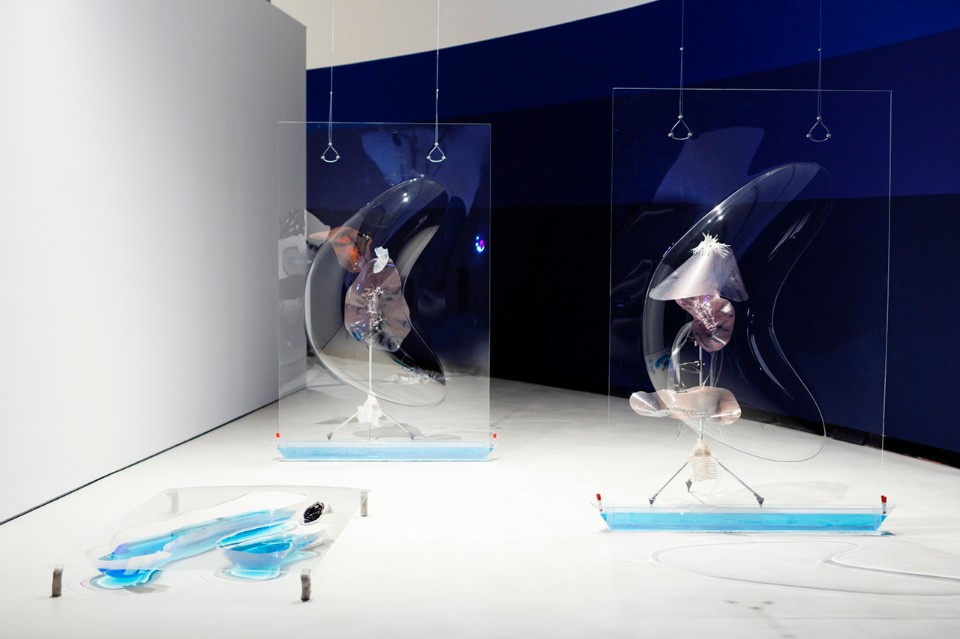
"Low form. Imaginaries and Visions in the Age of Artificial Intelligence ": an exhibition that invites you to relate in an artistic key with the limits of technology in terms of both instrument and content
The exhibition curated by Bartolomeo Pietromarchial MAXXI is composed of 16 works that restore and feed imaginaries and visions through a plurality of linguistic complexes in which political contestation, sexual experimentation and artistic expression overlap, weaving together with the user mobile and open bonds. The user is invited to investigate the artistic implications of contemporary technological drift by activating a process of comparison with themes that touch upon different disciplinary areas such as computational design, the status of the image and philosophy.
“Low form. Imaginaries and Visions in the Age of Artificial Intelligence", curated by Bartolomeo Pietromarchi, exhibition view, MAXXI, Rome, 2018
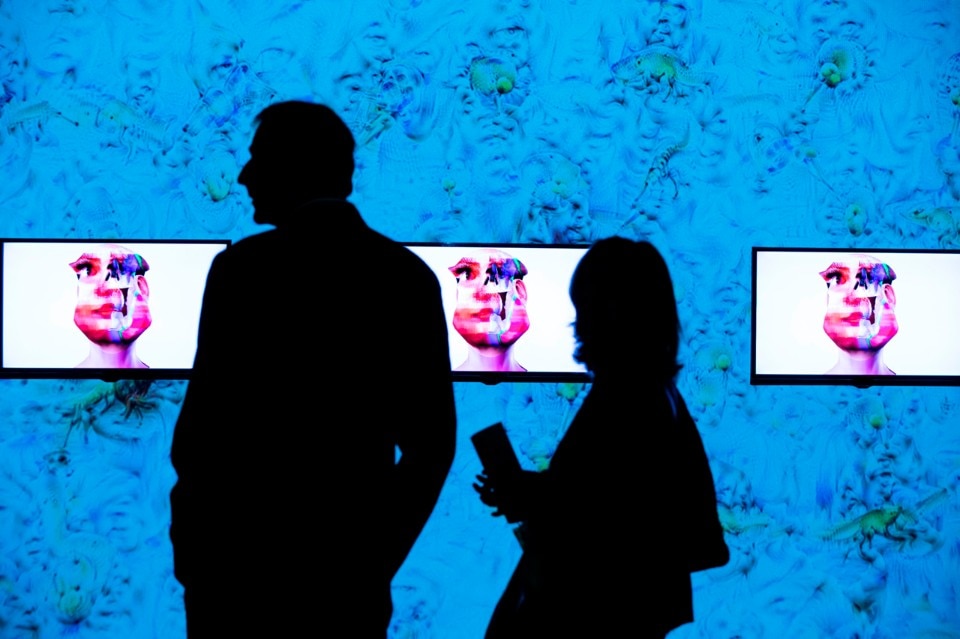
"Low form. Imaginaries and Visions in the Age of Artificial Intelligence ": an exhibition that invites you to relate in an artistic key with the limits of technology in terms of both instrument and content
The exhibition curated by Bartolomeo Pietromarchial MAXXI is composed of 16 works that restore and feed imaginaries and visions through a plurality of linguistic complexes in which political contestation, sexual experimentation and artistic expression overlap, weaving together with the user mobile and open bonds. The user is invited to investigate the artistic implications of contemporary technological drift by activating a process of comparison with themes that touch upon different disciplinary areas such as computational design, the status of the image and philosophy.
“Low form. Imaginaries and Visions in the Age of Artificial Intelligence", curated by Bartolomeo Pietromarchi, exhibition view, MAXXI, Rome, 2018
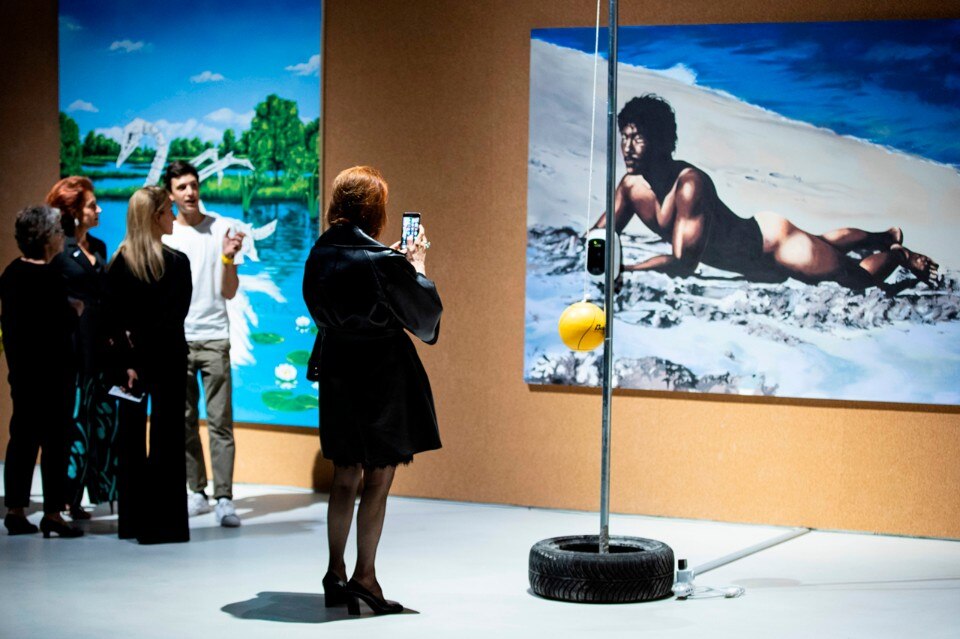
"Low form. Imaginaries and Visions in the Age of Artificial Intelligence ": an exhibition that invites you to relate in an artistic key with the limits of technology in terms of both instrument and content
The exhibition curated by Bartolomeo Pietromarchial MAXXI is composed of 16 works that restore and feed imaginaries and visions through a plurality of linguistic complexes in which political contestation, sexual experimentation and artistic expression overlap, weaving together with the user mobile and open bonds. The user is invited to investigate the artistic implications of contemporary technological drift by activating a process of comparison with themes that touch upon different disciplinary areas such as computational design, the status of the image and philosophy.
“Low form. Imaginaries and Visions in the Age of Artificial Intelligence", curated by Bartolomeo Pietromarchi, exhibition view, MAXXI, Rome, 2018
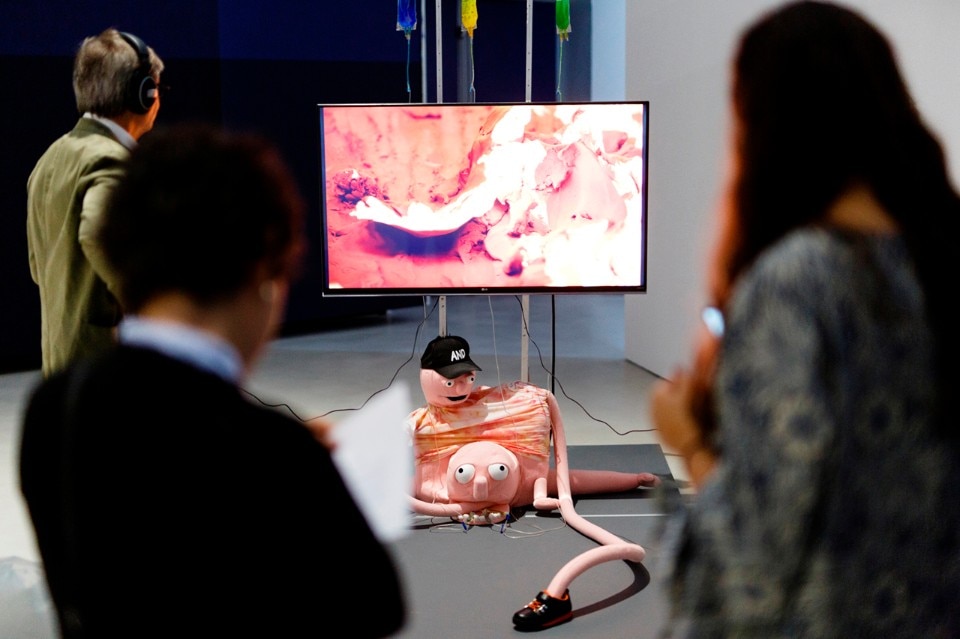
"Low form. Imaginaries and Visions in the Age of Artificial Intelligence ": an exhibition that invites you to relate in an artistic key with the limits of technology in terms of both instrument and content
The exhibition curated by Bartolomeo Pietromarchial MAXXI is composed of 16 works that restore and feed imaginaries and visions through a plurality of linguistic complexes in which political contestation, sexual experimentation and artistic expression overlap, weaving together with the user mobile and open bonds. The user is invited to investigate the artistic implications of contemporary technological drift by activating a process of comparison with themes that touch upon different disciplinary areas such as computational design, the status of the image and philosophy.
“Low form. Imaginaries and Visions in the Age of Artificial Intelligence", curated by Bartolomeo Pietromarchi, exhibition view, MAXXI, Rome, 2018
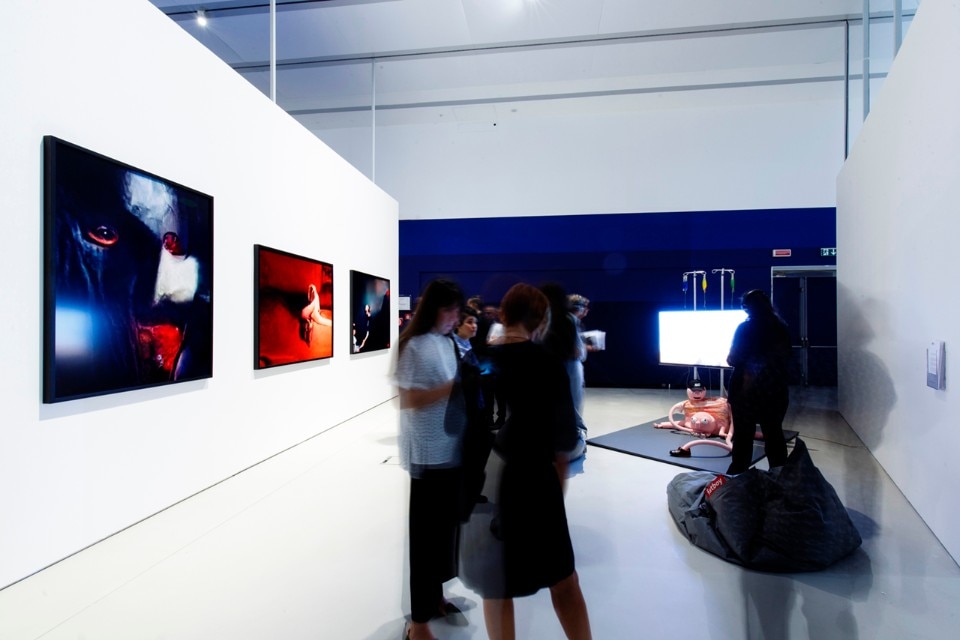
"Low form. Imaginaries and Visions in the Age of Artificial Intelligence ": an exhibition that invites you to relate in an artistic key with the limits of technology in terms of both instrument and content
The exhibition curated by Bartolomeo Pietromarchial MAXXI is composed of 16 works that restore and feed imaginaries and visions through a plurality of linguistic complexes in which political contestation, sexual experimentation and artistic expression overlap, weaving together with the user mobile and open bonds. The user is invited to investigate the artistic implications of contemporary technological drift by activating a process of comparison with themes that touch upon different disciplinary areas such as computational design, the status of the image and philosophy.
“Low form. Imaginaries and Visions in the Age of Artificial Intelligence", curated by Bartolomeo Pietromarchi, exhibition view, MAXXI, Rome, 2018
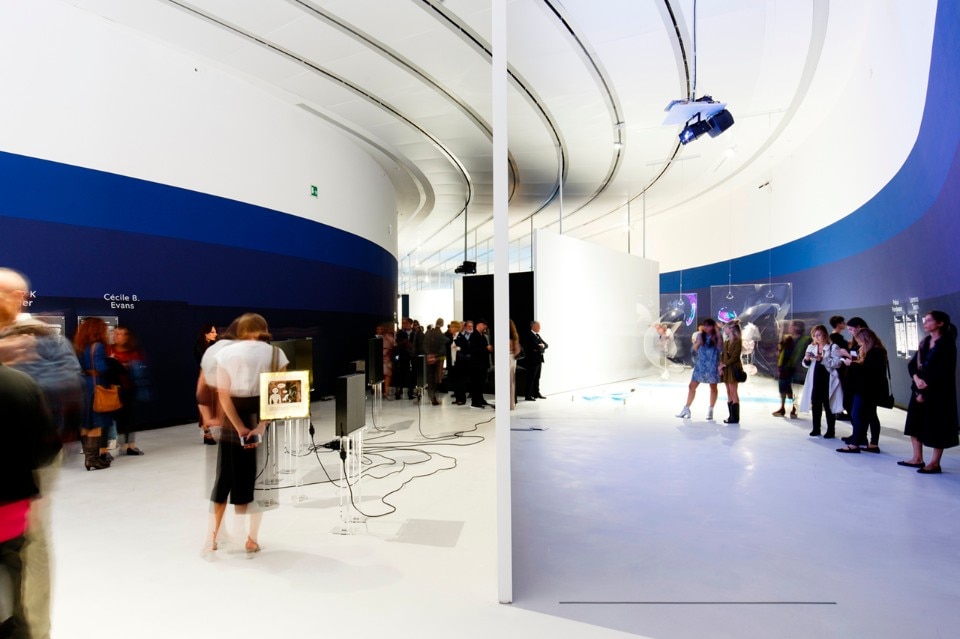
"Low form. Imaginaries and Visions in the Age of Artificial Intelligence ": an exhibition that invites you to relate in an artistic key with the limits of technology in terms of both instrument and content
The exhibition curated by Bartolomeo Pietromarchial MAXXI is composed of 16 works that restore and feed imaginaries and visions through a plurality of linguistic complexes in which political contestation, sexual experimentation and artistic expression overlap, weaving together with the user mobile and open bonds. The user is invited to investigate the artistic implications of contemporary technological drift by activating a process of comparison with themes that touch upon different disciplinary areas such as computational design, the status of the image and philosophy.
“Low form. Imaginaries and Visions in the Age of Artificial Intelligence", curated by Bartolomeo Pietromarchi, exhibition view, MAXXI, Rome, 2018
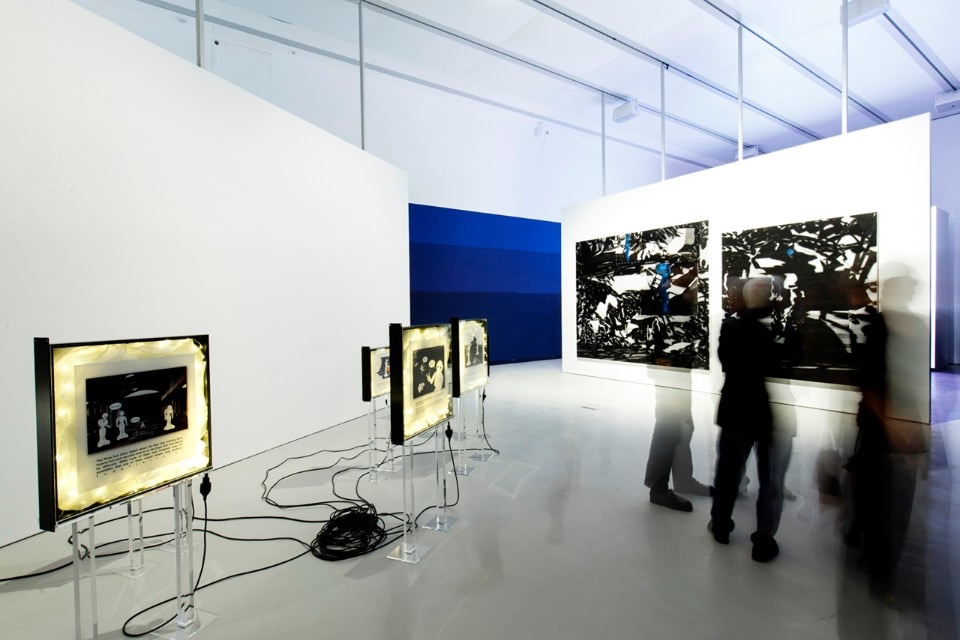
"Low form. Imaginaries and Visions in the Age of Artificial Intelligence ": an exhibition that invites you to relate in an artistic key with the limits of technology in terms of both instrument and content
The exhibition curated by Bartolomeo Pietromarchial MAXXI is composed of 16 works that restore and feed imaginaries and visions through a plurality of linguistic complexes in which political contestation, sexual experimentation and artistic expression overlap, weaving together with the user mobile and open bonds. The user is invited to investigate the artistic implications of contemporary technological drift by activating a process of comparison with themes that touch upon different disciplinary areas such as computational design, the status of the image and philosophy.
“Low form. Imaginaries and Visions in the Age of Artificial Intelligence", curated by Bartolomeo Pietromarchi, exhibition view, MAXXI, Rome, 2018
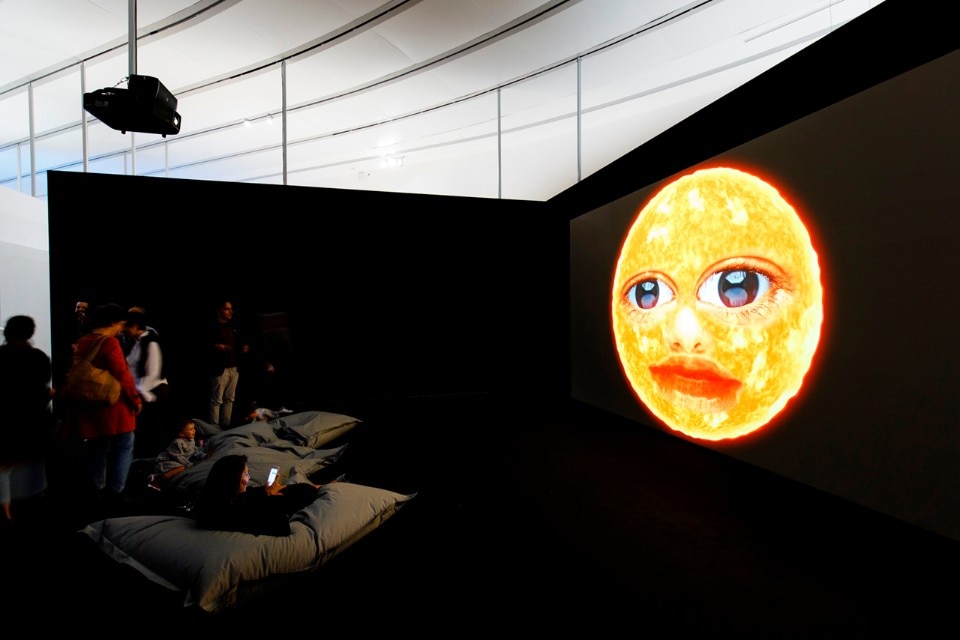
"Low form. Imaginaries and Visions in the Age of Artificial Intelligence ": an exhibition that invites you to relate in an artistic key with the limits of technology in terms of both instrument and content
The exhibition curated by Bartolomeo Pietromarchial MAXXI is composed of 16 works that restore and feed imaginaries and visions through a plurality of linguistic complexes in which political contestation, sexual experimentation and artistic expression overlap, weaving together with the user mobile and open bonds. The user is invited to investigate the artistic implications of contemporary technological drift by activating a process of comparison with themes that touch upon different disciplinary areas such as computational design, the status of the image and philosophy.
“Low form. Imaginaries and Visions in the Age of Artificial Intelligence", curated by Bartolomeo Pietromarchi, exhibition view, MAXXI, Rome, 2018
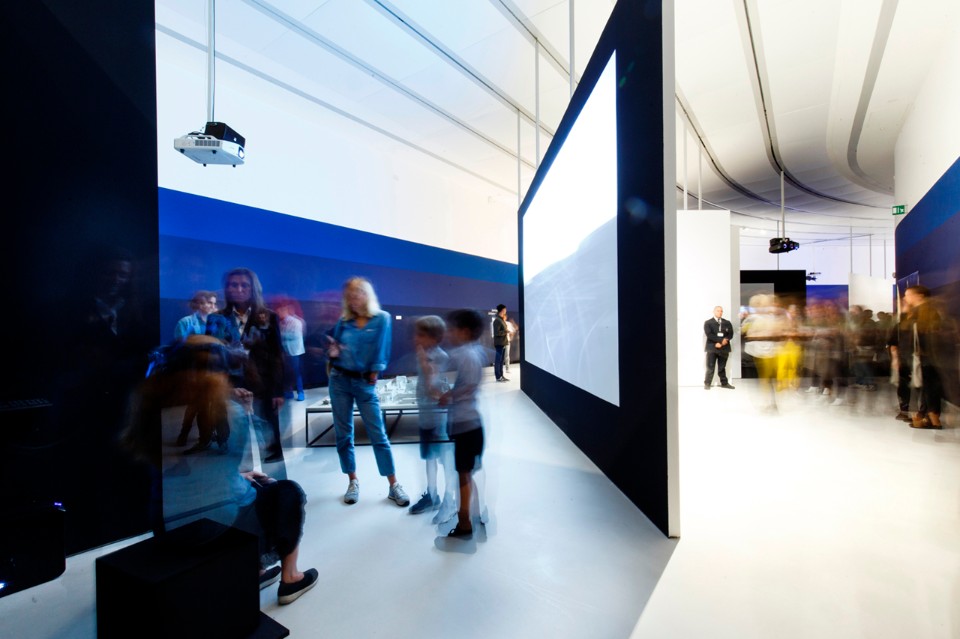
"Low form. Imaginaries and Visions in the Age of Artificial Intelligence ": an exhibition that invites you to relate in an artistic key with the limits of technology in terms of both instrument and content
The exhibition curated by Bartolomeo Pietromarchial MAXXI is composed of 16 works that restore and feed imaginaries and visions through a plurality of linguistic complexes in which political contestation, sexual experimentation and artistic expression overlap, weaving together with the user mobile and open bonds. The user is invited to investigate the artistic implications of contemporary technological drift by activating a process of comparison with themes that touch upon different disciplinary areas such as computational design, the status of the image and philosophy.
“Low form. Imaginaries and Visions in the Age of Artificial Intelligence", curated by Bartolomeo Pietromarchi, exhibition view, MAXXI, Rome, 2018
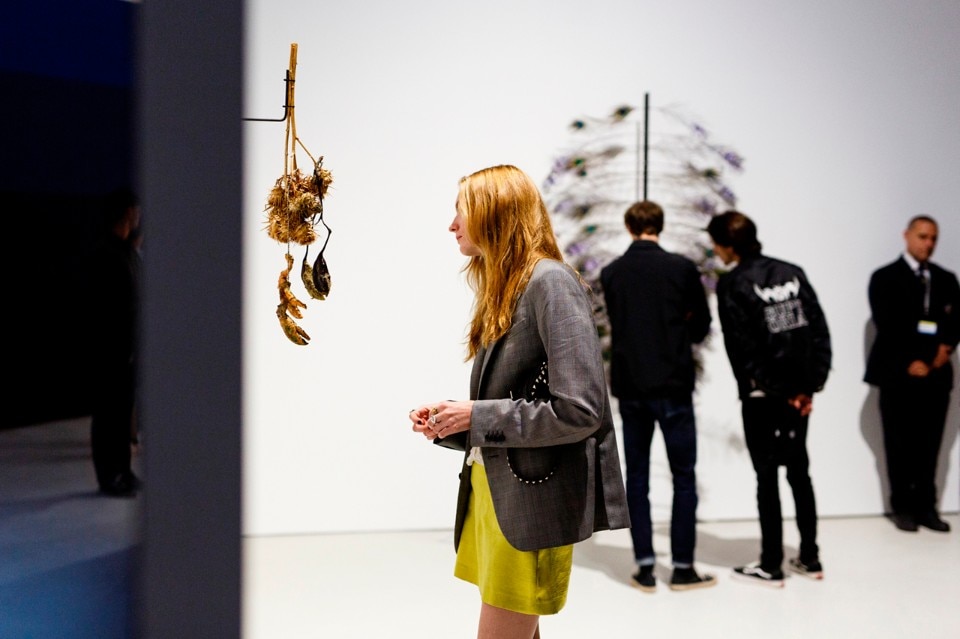
"Low form. Imaginaries and Visions in the Age of Artificial Intelligence ": an exhibition that invites you to relate in an artistic key with the limits of technology in terms of both instrument and content
The exhibition curated by Bartolomeo Pietromarchial MAXXI is composed of 16 works that restore and feed imaginaries and visions through a plurality of linguistic complexes in which political contestation, sexual experimentation and artistic expression overlap, weaving together with the user mobile and open bonds. The user is invited to investigate the artistic implications of contemporary technological drift by activating a process of comparison with themes that touch upon different disciplinary areas such as computational design, the status of the image and philosophy.
“Low form. Imaginaries and Visions in the Age of Artificial Intelligence", curated by Bartolomeo Pietromarchi, exhibition view, MAXXI, Rome, 2018
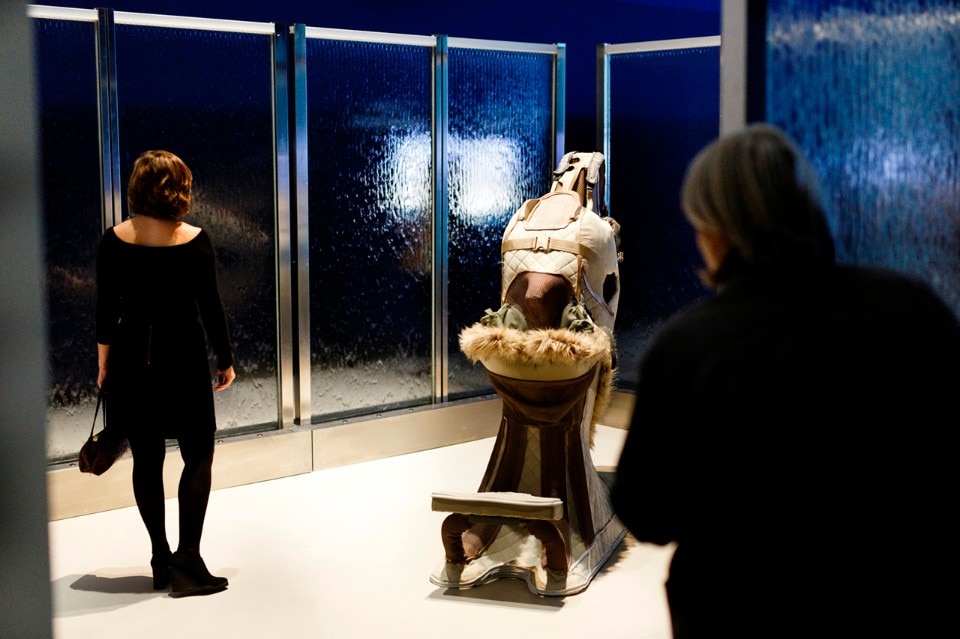
"Low form. Imaginaries and Visions in the Age of Artificial Intelligence ": an exhibition that invites you to relate in an artistic key with the limits of technology in terms of both instrument and content
The exhibition curated by Bartolomeo Pietromarchial MAXXI is composed of 16 works that restore and feed imaginaries and visions through a plurality of linguistic complexes in which political contestation, sexual experimentation and artistic expression overlap, weaving together with the user mobile and open bonds. The user is invited to investigate the artistic implications of contemporary technological drift by activating a process of comparison with themes that touch upon different disciplinary areas such as computational design, the status of the image and philosophy.
“Low form. Imaginaries and Visions in the Age of Artificial Intelligence", curated by Bartolomeo Pietromarchi, exhibition view, MAXXI, Rome, 2018
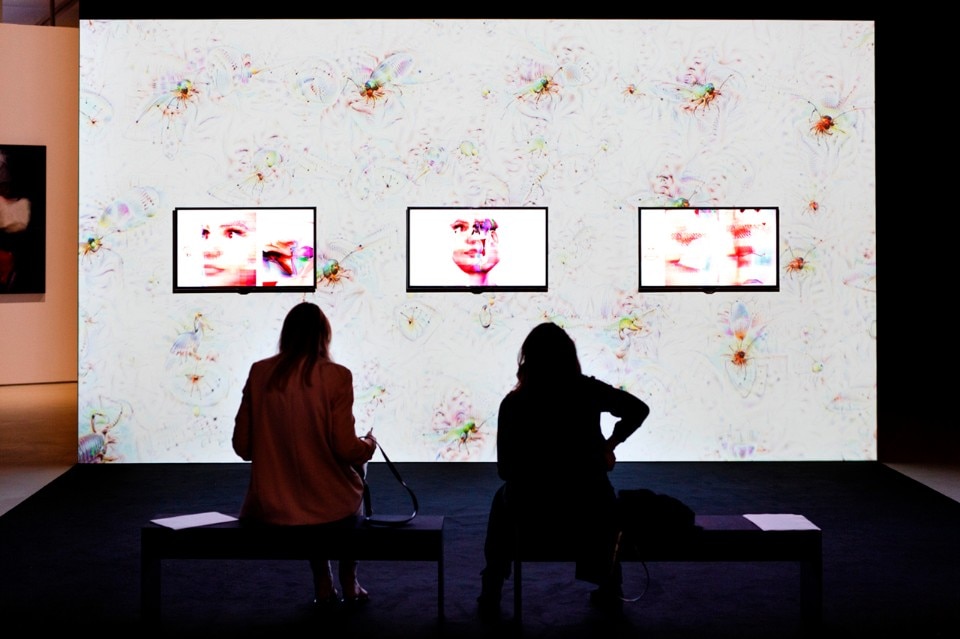
"Low form. Imaginaries and Visions in the Age of Artificial Intelligence ": an exhibition that invites you to relate in an artistic key with the limits of technology in terms of both instrument and content
The exhibition curated by Bartolomeo Pietromarchial MAXXI is composed of 16 works that restore and feed imaginaries and visions through a plurality of linguistic complexes in which political contestation, sexual experimentation and artistic expression overlap, weaving together with the user mobile and open bonds. The user is invited to investigate the artistic implications of contemporary technological drift by activating a process of comparison with themes that touch upon different disciplinary areas such as computational design, the status of the image and philosophy.
“Low form. Imaginaries and Visions in the Age of Artificial Intelligence", curated by Bartolomeo Pietromarchi, exhibition view, MAXXI, Rome, 2018

"Low form. Imaginaries and Visions in the Age of Artificial Intelligence ": an exhibition that invites you to relate in an artistic key with the limits of technology in terms of both instrument and content
The exhibition curated by Bartolomeo Pietromarchial MAXXI is composed of 16 works that restore and feed imaginaries and visions through a plurality of linguistic complexes in which political contestation, sexual experimentation and artistic expression overlap, weaving together with the user mobile and open bonds. The user is invited to investigate the artistic implications of contemporary technological drift by activating a process of comparison with themes that touch upon different disciplinary areas such as computational design, the status of the image and philosophy.
“Low form. Imaginaries and Visions in the Age of Artificial Intelligence", curated by Bartolomeo Pietromarchi, exhibition view, MAXXI, Rome, 2018

"Low form. Imaginaries and Visions in the Age of Artificial Intelligence ": an exhibition that invites you to relate in an artistic key with the limits of technology in terms of both instrument and content
The exhibition curated by Bartolomeo Pietromarchial MAXXI is composed of 16 works that restore and feed imaginaries and visions through a plurality of linguistic complexes in which political contestation, sexual experimentation and artistic expression overlap, weaving together with the user mobile and open bonds. The user is invited to investigate the artistic implications of contemporary technological drift by activating a process of comparison with themes that touch upon different disciplinary areas such as computational design, the status of the image and philosophy.
“Low form. Imaginaries and Visions in the Age of Artificial Intelligence", curated by Bartolomeo Pietromarchi, exhibition view, MAXXI, Rome, 2018

"Low form. Imaginaries and Visions in the Age of Artificial Intelligence ": an exhibition that invites you to relate in an artistic key with the limits of technology in terms of both instrument and content
The exhibition curated by Bartolomeo Pietromarchial MAXXI is composed of 16 works that restore and feed imaginaries and visions through a plurality of linguistic complexes in which political contestation, sexual experimentation and artistic expression overlap, weaving together with the user mobile and open bonds. The user is invited to investigate the artistic implications of contemporary technological drift by activating a process of comparison with themes that touch upon different disciplinary areas such as computational design, the status of the image and philosophy.
“Low form. Imaginaries and Visions in the Age of Artificial Intelligence", curated by Bartolomeo Pietromarchi, exhibition view, MAXXI, Rome, 2018

"Low form. Imaginaries and Visions in the Age of Artificial Intelligence ": an exhibition that invites you to relate in an artistic key with the limits of technology in terms of both instrument and content
The exhibition curated by Bartolomeo Pietromarchial MAXXI is composed of 16 works that restore and feed imaginaries and visions through a plurality of linguistic complexes in which political contestation, sexual experimentation and artistic expression overlap, weaving together with the user mobile and open bonds. The user is invited to investigate the artistic implications of contemporary technological drift by activating a process of comparison with themes that touch upon different disciplinary areas such as computational design, the status of the image and philosophy.
“Low form. Imaginaries and Visions in the Age of Artificial Intelligence", curated by Bartolomeo Pietromarchi, exhibition view, MAXXI, Rome, 2018

"Low form. Imaginaries and Visions in the Age of Artificial Intelligence ": an exhibition that invites you to relate in an artistic key with the limits of technology in terms of both instrument and content
The exhibition curated by Bartolomeo Pietromarchial MAXXI is composed of 16 works that restore and feed imaginaries and visions through a plurality of linguistic complexes in which political contestation, sexual experimentation and artistic expression overlap, weaving together with the user mobile and open bonds. The user is invited to investigate the artistic implications of contemporary technological drift by activating a process of comparison with themes that touch upon different disciplinary areas such as computational design, the status of the image and philosophy.
“Low form. Imaginaries and Visions in the Age of Artificial Intelligence", curated by Bartolomeo Pietromarchi, exhibition view, MAXXI, Rome, 2018

"Low form. Imaginaries and Visions in the Age of Artificial Intelligence ": an exhibition that invites you to relate in an artistic key with the limits of technology in terms of both instrument and content
The exhibition curated by Bartolomeo Pietromarchial MAXXI is composed of 16 works that restore and feed imaginaries and visions through a plurality of linguistic complexes in which political contestation, sexual experimentation and artistic expression overlap, weaving together with the user mobile and open bonds. The user is invited to investigate the artistic implications of contemporary technological drift by activating a process of comparison with themes that touch upon different disciplinary areas such as computational design, the status of the image and philosophy.
“Low form. Imaginaries and Visions in the Age of Artificial Intelligence", curated by Bartolomeo Pietromarchi, exhibition view, MAXXI, Rome, 2018

"Low form. Imaginaries and Visions in the Age of Artificial Intelligence ": an exhibition that invites you to relate in an artistic key with the limits of technology in terms of both instrument and content
The exhibition curated by Bartolomeo Pietromarchial MAXXI is composed of 16 works that restore and feed imaginaries and visions through a plurality of linguistic complexes in which political contestation, sexual experimentation and artistic expression overlap, weaving together with the user mobile and open bonds. The user is invited to investigate the artistic implications of contemporary technological drift by activating a process of comparison with themes that touch upon different disciplinary areas such as computational design, the status of the image and philosophy.
“Low form. Imaginaries and Visions in the Age of Artificial Intelligence", curated by Bartolomeo Pietromarchi, exhibition view, MAXXI, Rome, 2018

"Low form. Imaginaries and Visions in the Age of Artificial Intelligence ": an exhibition that invites you to relate in an artistic key with the limits of technology in terms of both instrument and content
The exhibition curated by Bartolomeo Pietromarchial MAXXI is composed of 16 works that restore and feed imaginaries and visions through a plurality of linguistic complexes in which political contestation, sexual experimentation and artistic expression overlap, weaving together with the user mobile and open bonds. The user is invited to investigate the artistic implications of contemporary technological drift by activating a process of comparison with themes that touch upon different disciplinary areas such as computational design, the status of the image and philosophy.
“Low form. Imaginaries and Visions in the Age of Artificial Intelligence", curated by Bartolomeo Pietromarchi, exhibition view, MAXXI, Rome, 2018

"Low form. Imaginaries and Visions in the Age of Artificial Intelligence ": an exhibition that invites you to relate in an artistic key with the limits of technology in terms of both instrument and content
The exhibition curated by Bartolomeo Pietromarchial MAXXI is composed of 16 works that restore and feed imaginaries and visions through a plurality of linguistic complexes in which political contestation, sexual experimentation and artistic expression overlap, weaving together with the user mobile and open bonds. The user is invited to investigate the artistic implications of contemporary technological drift by activating a process of comparison with themes that touch upon different disciplinary areas such as computational design, the status of the image and philosophy.
“Low form. Imaginaries and Visions in the Age of Artificial Intelligence", curated by Bartolomeo Pietromarchi, exhibition view, MAXXI, Rome, 2018

"Low form. Imaginaries and Visions in the Age of Artificial Intelligence ": an exhibition that invites you to relate in an artistic key with the limits of technology in terms of both instrument and content
The exhibition curated by Bartolomeo Pietromarchial MAXXI is composed of 16 works that restore and feed imaginaries and visions through a plurality of linguistic complexes in which political contestation, sexual experimentation and artistic expression overlap, weaving together with the user mobile and open bonds. The user is invited to investigate the artistic implications of contemporary technological drift by activating a process of comparison with themes that touch upon different disciplinary areas such as computational design, the status of the image and philosophy.
“Low form. Imaginaries and Visions in the Age of Artificial Intelligence", curated by Bartolomeo Pietromarchi, exhibition view, MAXXI, Rome, 2018

"Low form. Imaginaries and Visions in the Age of Artificial Intelligence ": an exhibition that invites you to relate in an artistic key with the limits of technology in terms of both instrument and content
The exhibition curated by Bartolomeo Pietromarchial MAXXI is composed of 16 works that restore and feed imaginaries and visions through a plurality of linguistic complexes in which political contestation, sexual experimentation and artistic expression overlap, weaving together with the user mobile and open bonds. The user is invited to investigate the artistic implications of contemporary technological drift by activating a process of comparison with themes that touch upon different disciplinary areas such as computational design, the status of the image and philosophy.
“Low form. Imaginaries and Visions in the Age of Artificial Intelligence", curated by Bartolomeo Pietromarchi, exhibition view, MAXXI, Rome, 2018

"Low form. Imaginaries and Visions in the Age of Artificial Intelligence ": an exhibition that invites you to relate in an artistic key with the limits of technology in terms of both instrument and content
The exhibition curated by Bartolomeo Pietromarchial MAXXI is composed of 16 works that restore and feed imaginaries and visions through a plurality of linguistic complexes in which political contestation, sexual experimentation and artistic expression overlap, weaving together with the user mobile and open bonds. The user is invited to investigate the artistic implications of contemporary technological drift by activating a process of comparison with themes that touch upon different disciplinary areas such as computational design, the status of the image and philosophy.
“Low form. Imaginaries and Visions in the Age of Artificial Intelligence", curated by Bartolomeo Pietromarchi, exhibition view, MAXXI, Rome, 2018

"Low form. Imaginaries and Visions in the Age of Artificial Intelligence ": an exhibition that invites you to relate in an artistic key with the limits of technology in terms of both instrument and content
The exhibition curated by Bartolomeo Pietromarchial MAXXI is composed of 16 works that restore and feed imaginaries and visions through a plurality of linguistic complexes in which political contestation, sexual experimentation and artistic expression overlap, weaving together with the user mobile and open bonds. The user is invited to investigate the artistic implications of contemporary technological drift by activating a process of comparison with themes that touch upon different disciplinary areas such as computational design, the status of the image and philosophy.
“Low form. Imaginaries and Visions in the Age of Artificial Intelligence", curated by Bartolomeo Pietromarchi, exhibition view, MAXXI, Rome, 2018

"Low form. Imaginaries and Visions in the Age of Artificial Intelligence ": an exhibition that invites you to relate in an artistic key with the limits of technology in terms of both instrument and content
The exhibition curated by Bartolomeo Pietromarchial MAXXI is composed of 16 works that restore and feed imaginaries and visions through a plurality of linguistic complexes in which political contestation, sexual experimentation and artistic expression overlap, weaving together with the user mobile and open bonds. The user is invited to investigate the artistic implications of contemporary technological drift by activating a process of comparison with themes that touch upon different disciplinary areas such as computational design, the status of the image and philosophy.
“Low form. Imaginaries and Visions in the Age of Artificial Intelligence", curated by Bartolomeo Pietromarchi, exhibition view, MAXXI, Rome, 2018

"Low form. Imaginaries and Visions in the Age of Artificial Intelligence ": an exhibition that invites you to relate in an artistic key with the limits of technology in terms of both instrument and content
The exhibition curated by Bartolomeo Pietromarchial MAXXI is composed of 16 works that restore and feed imaginaries and visions through a plurality of linguistic complexes in which political contestation, sexual experimentation and artistic expression overlap, weaving together with the user mobile and open bonds. The user is invited to investigate the artistic implications of contemporary technological drift by activating a process of comparison with themes that touch upon different disciplinary areas such as computational design, the status of the image and philosophy.
“Low form. Imaginaries and Visions in the Age of Artificial Intelligence", curated by Bartolomeo Pietromarchi, exhibition view, MAXXI, Rome, 2018

"Low form. Imaginaries and Visions in the Age of Artificial Intelligence ": an exhibition that invites you to relate in an artistic key with the limits of technology in terms of both instrument and content
The exhibition curated by Bartolomeo Pietromarchial MAXXI is composed of 16 works that restore and feed imaginaries and visions through a plurality of linguistic complexes in which political contestation, sexual experimentation and artistic expression overlap, weaving together with the user mobile and open bonds. The user is invited to investigate the artistic implications of contemporary technological drift by activating a process of comparison with themes that touch upon different disciplinary areas such as computational design, the status of the image and philosophy.
“Low form. Imaginaries and Visions in the Age of Artificial Intelligence", curated by Bartolomeo Pietromarchi, exhibition view, MAXXI, Rome, 2018

"Low form. Imaginaries and Visions in the Age of Artificial Intelligence ": an exhibition that invites you to relate in an artistic key with the limits of technology in terms of both instrument and content
The exhibition curated by Bartolomeo Pietromarchial MAXXI is composed of 16 works that restore and feed imaginaries and visions through a plurality of linguistic complexes in which political contestation, sexual experimentation and artistic expression overlap, weaving together with the user mobile and open bonds. The user is invited to investigate the artistic implications of contemporary technological drift by activating a process of comparison with themes that touch upon different disciplinary areas such as computational design, the status of the image and philosophy.
“Low form. Imaginaries and Visions in the Age of Artificial Intelligence", curated by Bartolomeo Pietromarchi, exhibition view, MAXXI, Rome, 2018

"Low form. Imaginaries and Visions in the Age of Artificial Intelligence ": an exhibition that invites you to relate in an artistic key with the limits of technology in terms of both instrument and content
The exhibition curated by Bartolomeo Pietromarchial MAXXI is composed of 16 works that restore and feed imaginaries and visions through a plurality of linguistic complexes in which political contestation, sexual experimentation and artistic expression overlap, weaving together with the user mobile and open bonds. The user is invited to investigate the artistic implications of contemporary technological drift by activating a process of comparison with themes that touch upon different disciplinary areas such as computational design, the status of the image and philosophy.
“Low form. Imaginaries and Visions in the Age of Artificial Intelligence", curated by Bartolomeo Pietromarchi, exhibition view, MAXXI, Rome, 2018

"Low form. Imaginaries and Visions in the Age of Artificial Intelligence ": an exhibition that invites you to relate in an artistic key with the limits of technology in terms of both instrument and content
The exhibition curated by Bartolomeo Pietromarchial MAXXI is composed of 16 works that restore and feed imaginaries and visions through a plurality of linguistic complexes in which political contestation, sexual experimentation and artistic expression overlap, weaving together with the user mobile and open bonds. The user is invited to investigate the artistic implications of contemporary technological drift by activating a process of comparison with themes that touch upon different disciplinary areas such as computational design, the status of the image and philosophy.
“Low form. Imaginaries and Visions in the Age of Artificial Intelligence", curated by Bartolomeo Pietromarchi, exhibition view, MAXXI, Rome, 2018

"Low form. Imaginaries and Visions in the Age of Artificial Intelligence ": an exhibition that invites you to relate in an artistic key with the limits of technology in terms of both instrument and content
The exhibition curated by Bartolomeo Pietromarchial MAXXI is composed of 16 works that restore and feed imaginaries and visions through a plurality of linguistic complexes in which political contestation, sexual experimentation and artistic expression overlap, weaving together with the user mobile and open bonds. The user is invited to investigate the artistic implications of contemporary technological drift by activating a process of comparison with themes that touch upon different disciplinary areas such as computational design, the status of the image and philosophy.
“Low form. Imaginaries and Visions in the Age of Artificial Intelligence", curated by Bartolomeo Pietromarchi, exhibition view, MAXXI, Rome, 2018

"Low form. Imaginaries and Visions in the Age of Artificial Intelligence ": an exhibition that invites you to relate in an artistic key with the limits of technology in terms of both instrument and content
The exhibition curated by Bartolomeo Pietromarchial MAXXI is composed of 16 works that restore and feed imaginaries and visions through a plurality of linguistic complexes in which political contestation, sexual experimentation and artistic expression overlap, weaving together with the user mobile and open bonds. The user is invited to investigate the artistic implications of contemporary technological drift by activating a process of comparison with themes that touch upon different disciplinary areas such as computational design, the status of the image and philosophy.
“Low form. Imaginaries and Visions in the Age of Artificial Intelligence", curated by Bartolomeo Pietromarchi, exhibition view, MAXXI, Rome, 2018

"Low form. Imaginaries and Visions in the Age of Artificial Intelligence ": an exhibition that invites you to relate in an artistic key with the limits of technology in terms of both instrument and content
The exhibition curated by Bartolomeo Pietromarchial MAXXI is composed of 16 works that restore and feed imaginaries and visions through a plurality of linguistic complexes in which political contestation, sexual experimentation and artistic expression overlap, weaving together with the user mobile and open bonds. The user is invited to investigate the artistic implications of contemporary technological drift by activating a process of comparison with themes that touch upon different disciplinary areas such as computational design, the status of the image and philosophy.
“Low form. Imaginaries and Visions in the Age of Artificial Intelligence", curated by Bartolomeo Pietromarchi, exhibition view, MAXXI, Rome, 2018
“Low Form: Imaginaries and Visions in the Age of Artificial Intelligence” explores artistic implications of the contemporary technological drift by looking at elements involving different disciplinary realms such as computational design, the status of manipulated imagery, and philosophy. Making artists’ dialectic efforts more evident is an interesting publication that promotes our interpretation of the work on display.
It is an anthology of writings by artists and theorists who are actively interpreting such factors – the late theorist Mark Fisher, Hito Steyerl, Matteo Pasquinelli, Lucia Parisi, Benjamin Bratton and others. On display are 16 pieces that reflect and fuel the imagination through a multitude of intricate visual languages and intersectional systems in which political activism, sexual experimentation and artistic expression overlap, creating mobile and open connections with the viewer.
The invention of experiences makes the work vortical and multifarious. By means of technological manipulation and dispersion, it subverts and redefines aesthetic and formal codes without falling into the trap of spectacularising the restless relation between artistic endeavour and technology.
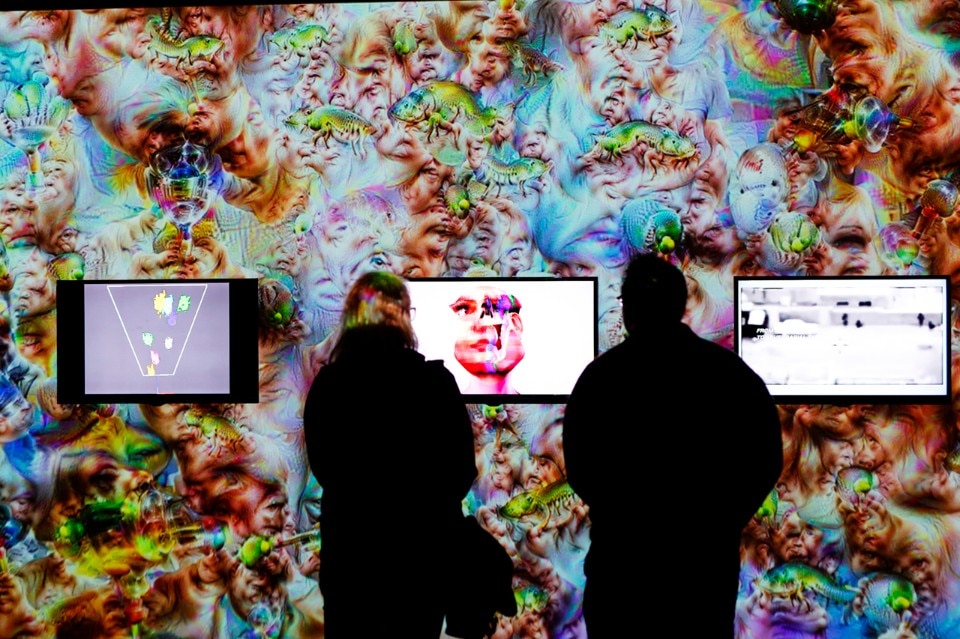
Microsoft’s ill-fated experimental chatbot Tay is the subject of I’m here to learn so :)))))) (2017) by Zach Blas and Jemina Wyman, who created a multi-channel video generated by the techniques of pattern recognition and machine learning. This allows Tay to think, talk and dance in front of a brightly coloured backdrop. Suspended in an oneiric and psychedelic dimension, the avatar asks existential questions about an era, a generation that seems to be hybrid, where the boundaries between technology and human are entirely lost.
A project by Cécile B. Evans, Test Cards, touches upon the same themes, the sense of reality, and the non-human life of two robots, A Plot and B Plot. They exchange opinions on the indispensability of our relation to machines in daily life, and how machines are invading territories that used to belong exclusively to humans.
Do You Like Cyber? by Emilio Vavarella probes the interaction between people and machines, and the anarchic self-determination of the latter. Now that algorithms optimise online dating, and robots act without any intervention from programmers, what are the human characteristics and behaviours that we want to assign to machines? What is the limit we wish to outline for them? Or is it perhaps too late? Are machines already self-conscious? Hito Steyerl attempts to answer by underlining how the concept of animism is effectively performed by the DeepDream software created by Google in 2015, which shows the possibility of aesthetic configurations and autonomous perceptions generated by following neural networks.
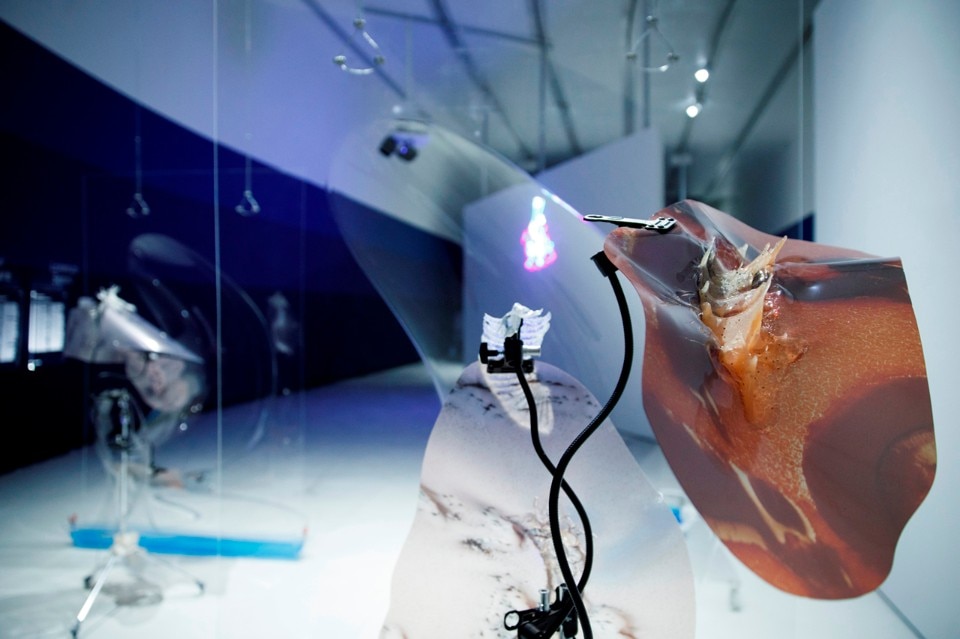
Theories developed by the contemporary British thinker Timothy Morton (the author of Hyperobjects: Philosophy and Ecology after the End of the Worldpublished in 2013), who sees the combination of machine and nature as a characteristic of our times, are sampled by Luca Trevisani in Caldo (Giorgio Manganelli) and Wireless Fidelity. The former is an assembly of natural elements baked in the sun. The latter is a sculpture made of peacock feathers printed under UV lamps. Hybridism of materials and shapes is the result of Trevisani’s experiments with natural and artificial objects to which he gives a disturbing factor.
Emissaries (2015–2017) by Ian Cheng is a trilogy of live simulation videos created using a video-game engine. He describes them as “a video game that plays itself,” populated by a cast of characters and wildlife that interact in randomly evolving, open-ended narratives. The work contemplates timeless questions about evolution, mutation, the origins of human consciousness, and ways of relating to a chaotic existence. It calls into question the concept of artistic authorship. Cheng’s videos follow multiple models of artificial intelligence as they show construction and destruction, progress and regression inside a self-sufficient ecosystem in perennial transformation.
The artist Agnieszka Polka presents the animated video What The Sun Has Seen (2017), depicting a post-Anthropocene era in which a commonplace smiley takes on the form of a sun, created using computerised facial recognition. The little sun observes and comments on the tumultuous times the Earth is currently experiencing. The luminous face is like a contemporary angel looking at the world and finding humour in humanity.
A beautiful piece by Lorenzo Senni, Pointillistic Trance, is animated by a sharp, profoundly digital soundtrack. A polyphony of sound, visions and lasers project glossy three-dimensional pictures that amplify destructured dance music made up of isolated, repeated fragments. This is a digital world proudly having fun with the enormous potential of machines in an unfettered way, without having its soul stolen.
The dense experience at “Low Form” is completed with artwork by Carola Bonfili, Pakui Hardware, Jamian Juliano-Villani, Nathaniel Mellors and Erkka Nissinen, Trevor Paglen, Jon Rafman, Avery K. Singer, Cheyney Thompson and Anna Uddenberg.
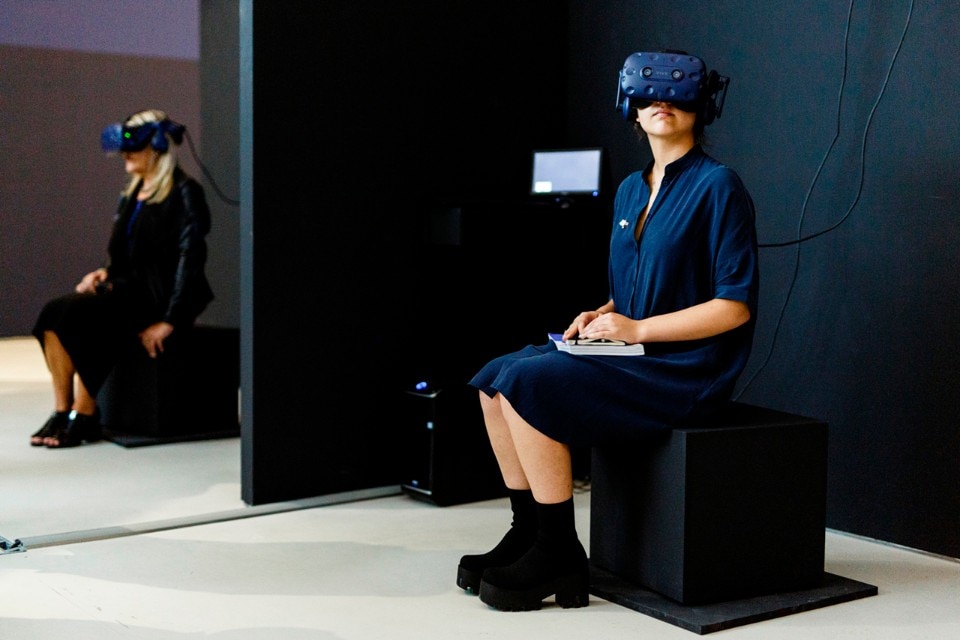
- Exhibition title:
- “Low form. Imaginaries and Visions in the Age of Artificial Intelligence"
- Curator:
- Bartolomeo Pietromarchi
- Venue:
- MAXXI
- Address:
- Via Guido Reni, 4/A, Rome
- Opening dates:
- 20th October 2018 - 24th February 2019


